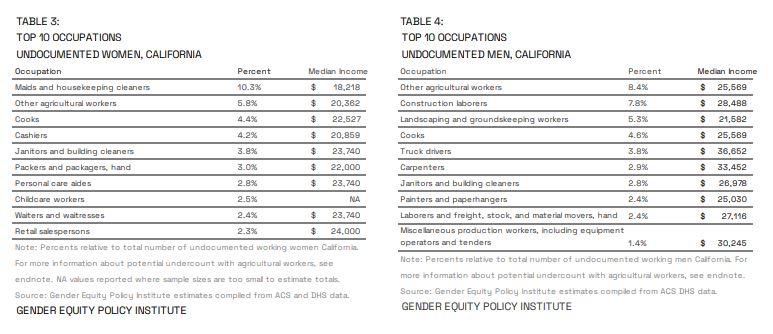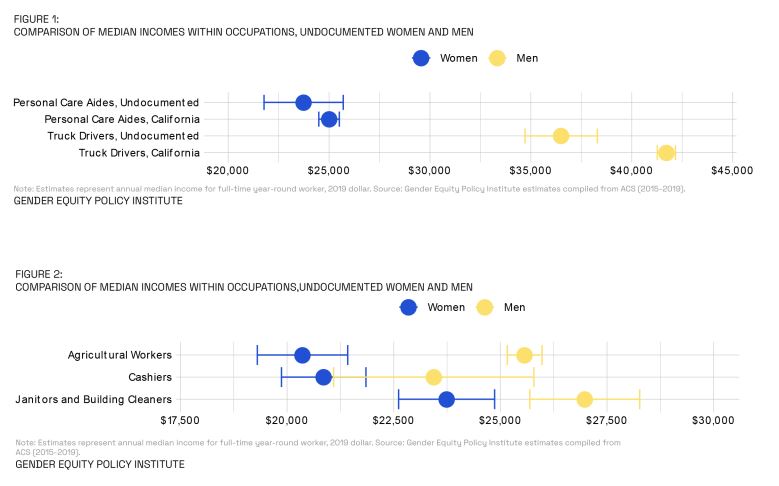SAN JOSE, Calif. (KRON) — According to the Gender Equity Institute (GEPI), a nonprofit research organization found that 64% of undocumented women in the state work in the labor force and earn 49 cents to every $1 earned compared to white men.
A new report, titled “Undocumented and Essential: A Profile of Undocumented Women in California,” analyzes the barriers that nearly one million undocumented women in California face.
The GEPI’s findings highlight that undocumented women are paid less than other Californians for similar work and suffer from high poverty rates, low rates of homeownership, and low rates of health insurance.
About 21% of undocumented women in California live below the poverty line and only 55% have health insurance.
“The Gender Equity Policy Institute’s report puts a gender lens on immigration,” said Nancy L. Cohen, president of GEPI.
“Too often, immigrant women are rendered invisible in our immigration debate. Forty-five percent of undocumented people in the United States are women,” Cohen added.
“But when the media or politicians discuss America’s immigration challenges, the immigrants they talk about tend to be men. Undocumented women have been on the frontlines throughout the pandemic as farmworkers, caregivers, and other essential workers. It’s time we pay attention to their unique experiences.”

Additionally, the report found that:
- The poverty rate for undocumented women in California is 20.9%.
- More than one third (34%) of undocumented women have incomes below 150% of the federal poverty line.
- The median income of women working in the ten most common occupations is $22,337, roughly $3,500 below the poverty threshold for a family of four.
- 55% of undocumented women in California have health insurance – a rate 41% lower than that for California women overall.
- Only 28% of undocumented women live in homes they or a family member owns; 71% of undocumented women are renters.
“Immigration is a gendered process that puts women in precarious situations,” said Ivy A.M. Cargile, Associate Professor of Political Science at CSUB and senior advisor to GEPI.
“Immigrant women who are undocumented are well aware of their vulnerable status in the U.S., but they also realize that opportunities for them are better here,” Cargile added.
“Compared to their male counterparts, they become more attached to the idea of remaining in the U.S. Still, as the Institute’s report makes clear, things are not easy for them.”

Similar trends in the Bay Area
According to Census Bureau data and the Immigration Forum interpretation, immigrants add about $10 billion each year to the U.S. economy.
Santa Clara County is home to one of the state’s highest undocumented immigrant populations with approximately 160,000 individuals.
In the South Bay, research data found that San Jose’s immigrant population has been vital to COVID-19 response efforts.
Consequently, the immigrant population has also been at greater risk of contracting the virus.
Data revealed that San Jose’s immigrant population is most vulnerable to the impacts of the pandemic due to gaps in federal relief packages, language access barriers, and increased risks of infection as they work the frontline and essential workforce.
